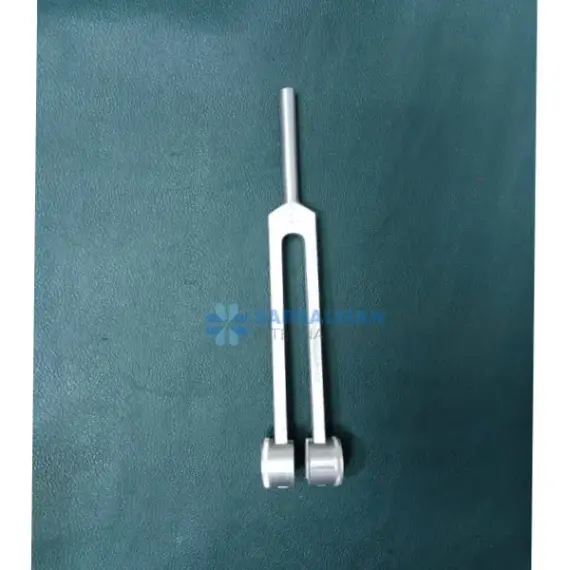Turning Fork
Free!
A tuning fork is a compact diagnostic tool for quick hearing and vibration-sense checks. Strike it, place it on bone or beside the ear, and read immediate clues from Rinne, Weber, and sensory tests. It’s durable, easy to disinfect, and battery-free, making it ideal for ENT screenings, diabetic foot care, neurology exams, and outreach clinics. Choose it for fast, reliable bedside assessments that guide next steps.
Description
A tuning fork is a precision acoustic tool used in clinics to assess hearing, vibration sense, and fracture pain response. Struck gently, it vibrates at a calibrated frequency and produces a pure tone. In ENT exams it supports bedside screening with Rinne and Weber tests. In neurology and podiatry, it helps check peripheral vibration sense at bony prominences. Rugged, corrosion-resistant construction and a non-slip stem make it reliable for daily use.
Key features and benefits:
• Calibrated frequencies (commonly 128 Hz and 512 Hz) for sensory and hearing checks
• Clear, sustained tone with minimal overtones for consistent results
• Non-slip handle and stable prongs for repeatable strikes
• Durable, corrosion-resistant alloy designed for sterilization and disinfection
• Optional dampers to control decay time during rapid workflows
Common use cases:
• ENT: quick Rinne and Weber differentiation between conductive and sensorineural loss
• Neurology and diabetes care: assessment of vibration sense at toes, ankles, and fingers
• Emergency and sports medicine: pain localization and potential fracture screening along bones
• Education and outreach: portable tool for bedside teaching and community screenings
How it compares:
• Versus disposable screening tools, a tuning fork provides a stable, reproducible stimulus without batteries.
• Versus electronic audiometers, it delivers fast, low-cost bedside triage where power or space is limited.
Quality and care notes:
• Choose forks with accurate stamping of frequency and a balanced stem for comfortable grip.
• Clean between patients with approved disinfectants; follow local protocols for sterilization.
• Store in a protective pouch to prevent bending and preserve calibration.
This compact instrument gives clinicians a dependable, battery-free way to gather meaningful diagnostic clues in seconds.




